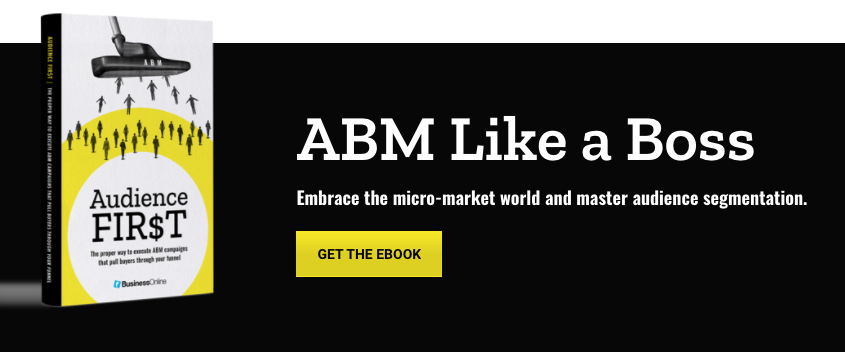Media is required to amplify any successful ABM campaign by finding the right target, delivering the right message and measuring the impact. But it has to be more than just using display ads to target accounts or syndicating some content on LinkedIn. Start by combining varying data sets to see an account’s digital activity holistically. This information begins to build a picture of how and where media can assist your sales and marketing efforts. Understanding what your audience needs and how to target them throughout the buying decision journey will dictate what media you should buy.
The goal is to make your media smarter by better understanding digital buying signals early on through intent data. All buyers create a traceable digital footprint of behavior.
You want to prioritize the bulk of your efforts on people who will buy relatively soon, not a year from now. The accounts that are farther out in any potential decision still have value for broader ongoing communications, but need to be weighted accordingly in the media mix and budget allocation. Remember that you can use the intent signals from your current customer base as a baseline for modeling key triggers to optimize media against.
My customer is searching for other vendors, that tells me she is not satisfied. I need to reach out. Where else is she getting her digital information?
High-performance media campaigns use a multitude of inputs for targeting and personalization. Think about where your customers get their information and what builds trust. Look at yourself as a focus group of one. Would you make a major purchase decision based on some pretty banner creative? The answer is probably no. You would look at review sites, ask for recommendations on social, do some Google searches, check the company out on LinkedIn, and read a variety thought leadership articles and whitepapers before taking any action.
The buying decision is not linear. You need to think of digital media as a portfolio of touchpoints and not siloed tactics.
Don’t oversimplify the customer journeys – remember it is organic and paid, outbound and inbound. Make sure you’re there with them every step of the way and add value. This is not about buying media to sell something. It’s about buying media to help them find a solution.
Remember that live sales interactions are also a major step in these purchase decisions because at the end of the day customers are just people. So where possible, account for those touchpoints when you’re serving up content and make sure information is shared between media engagement and sales interactions to ensure maximum relevancy. Use this to build a lead-scoring model that will evolve and get more accurate over time.
Lastly, use remarketing the right way and distinguish these efforts from prospecting. This, when combined in the right way with rigor and granularity, is the heart of smart media using predictive analytics and machine learning. Technology and media buy in and of themselves will not help you achieve your objectives. The end goal of media is to build trust and help progress users through their journey – not just bash them over the head with the same tired ebook.
Break Principle #4 and you will waste a lot of budget on ineffective media.


